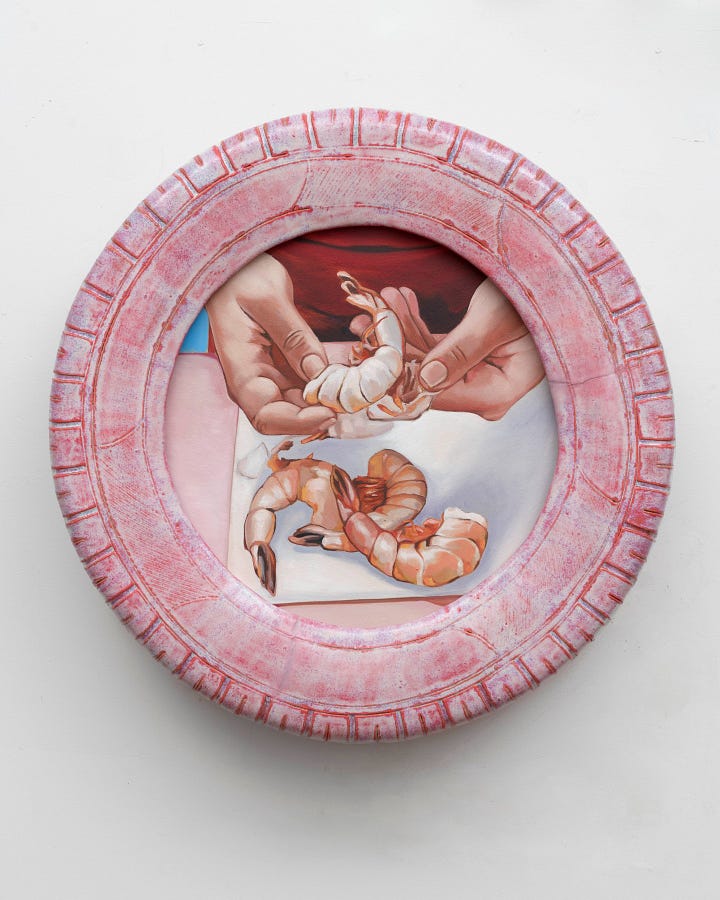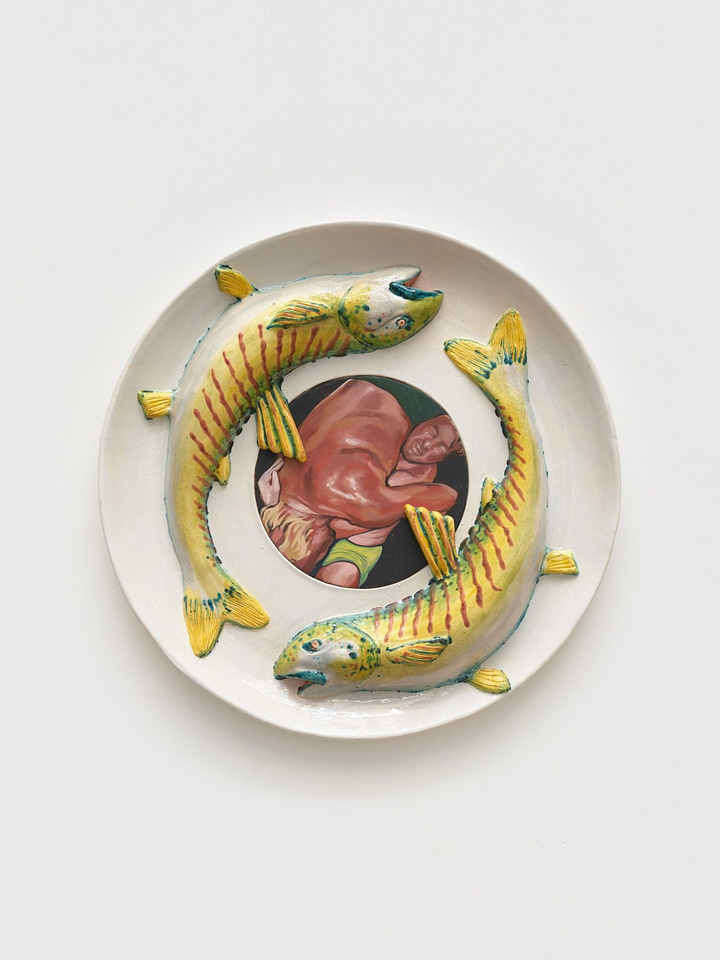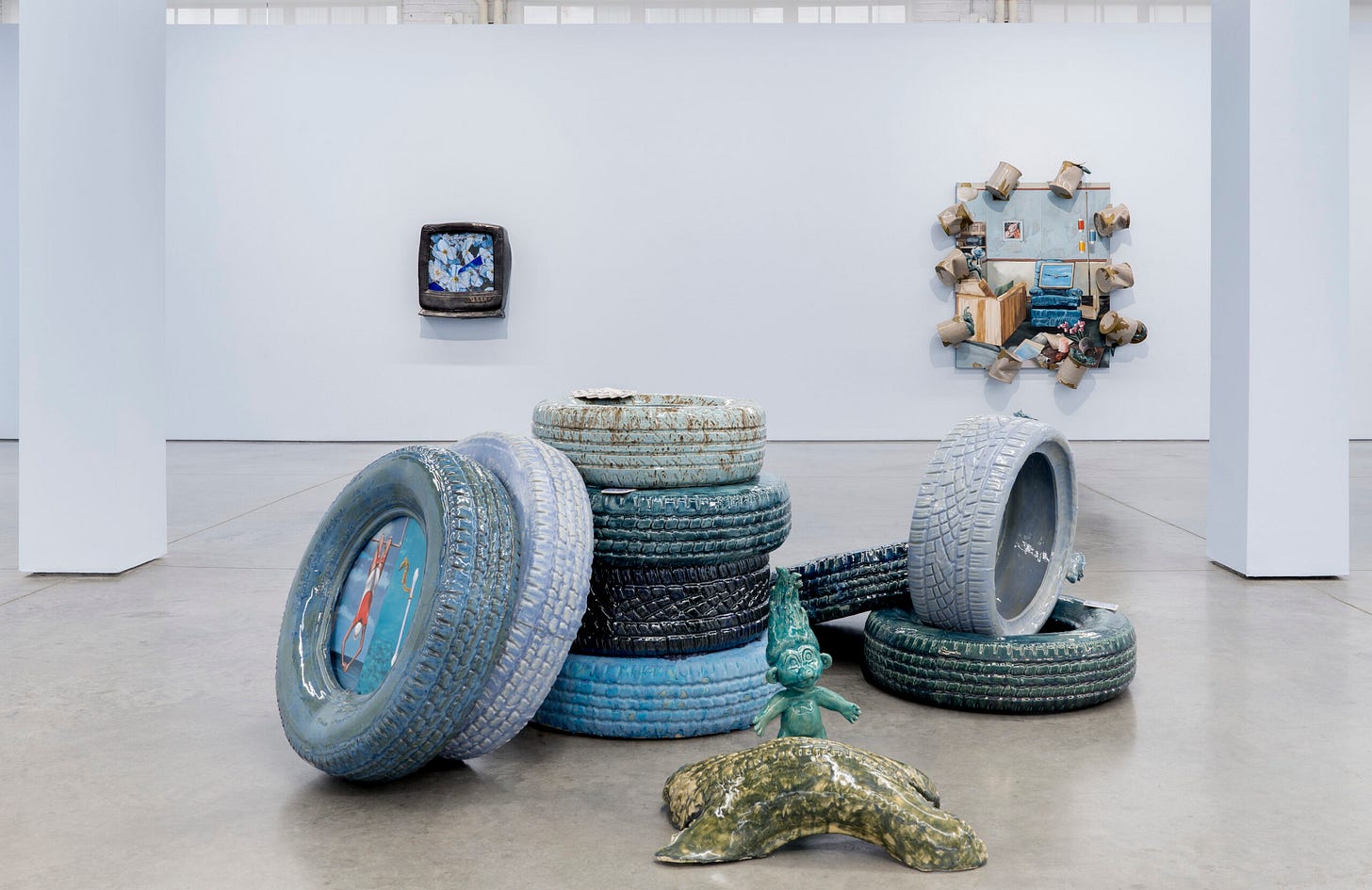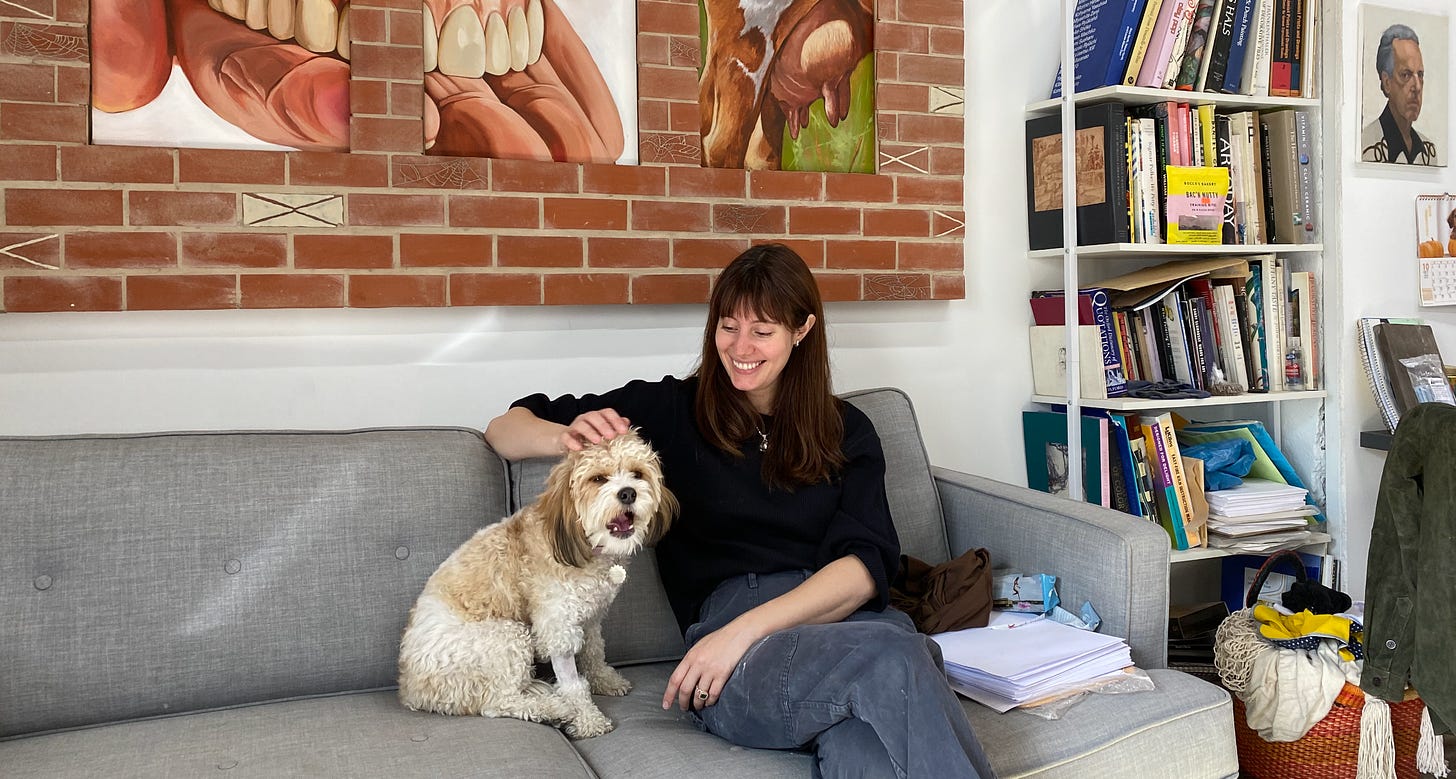#18 Stephanie Temma Hier
Stephanie Temma Hier, originally from Toronto, lives and works in Brooklyn. She holds a BFA from the Ontario College of Art and Design University and studied at the Academy of Art Canada .Stephanie's art emerges at the crossroads of oil painting and ceramic sculpture. She crafts figurative paintings, often showcasing scenes of fruits and other consumables, which are then integrated into her handcrafted ceramic sculptures. Her new body of work can be seen at Bradley Ertaskiran in Montreal till October 28.

"I received a formal education in painting in Toronto, my hometown, at a traditional art school. Later, during my college years, I approached painting from a more contemporary perspective. Around 8 or 10 years ago, I started working with sculpture in an organic, self-taught manner. Over time, my skills in sculpture naturally developed. I honed my craft by spending a lot of time on the internet, watching YouTube tutorials, and learning from my peers. I think I have quite an intuitive sense with sculpture. But technical wise I figured it out on my own. I also have taken a different approach with ceramics, really trying to fuse it with painting because of my painting background. That’s the thing with painting, when you’re formally taught, you’re taught to think in a more confining way. I faced skepticism from trained sculptors about my unconventional use of materials, but I eventually found ways to make it work. I believe that approaching a medium without a formal background allows for more innovation. Although I have a deep love for oil painting, I find it can be a bit dogmatic."
So if you feel more intuitive with sculpture, why do you continue to paint?
"Hmm, that's actually a good question. I still have a profound love for painting, and I'm drawn to it material-wise. I've had transcendental experiences with paintings, and I find the synthesis of sculpture and painting to be incredibly exciting. It also keeps my studio dynamic – on days when I don't feel like sculpting, I can paint, and vice versa."
You work with found images. Where and how do you source these images?
"I find images everywhere. I'm constantly taking photos with my phone. I search the internet extensively and visit the library in New York, which has been collecting images since 1914. I also buy old books from eBay or at garage sales. I usually scan them, resulting in numerous folders on my computer. When working on a piece, I rely on a moment of free association; sometimes, color drives my choices, while other times, it's different narratives. I pull from these references what I need for the artwork. Sometimes, the image itself inspires the sculptural elements."


Your work often features scenes related to food. Could you tell me more about that?
"In the past, I've indeed worked extensively with food-related subject matter, but my themes have evolved over time to include a variety of topics. I'm particularly intrigued by the idea of consumption, especially in the context of media and art. The sumptuousness of food, its beauty, and its ability to straddle the line between the attractive and the grotesque fascinate me. I love those dichotomies. I think they mirror many aspects of life. Food is also a universal symbol used frequently in art history."
For your exhibition at Bradley Ertaskiran, you mention wanting to create a narrative between art historical references and pop-culture relics. Can you elaborate on that connecting narrative?
"In this day and age, with our constant exposure to images on the internet, we're bombarded with visuals, creating a sense of timelessness where one image blends into the next without a clear connection. I aim to mirror this feeling in my work. The juxtaposition of seemingly unrelated elements allows viewers to create their own narratives. I'm also deeply interested in psychoanalysis and have explored it in therapy for several years now. I enjoy delving into the depths of dreams and the subconscious connections our minds make. Humans naturally seek to create narratives from things they encounter. Sometimes, people look at my work and share random anecdotes or memories, which is like evoking something for them. I prefer not to be too specific about what I portray. What interests me overall are these ephemeral feelings and how they relate to history. I'm a passionate art history enthusiast, and I studied it extensively in college. I still frequent the MET to view old paintings, I think that reference still exists for me."
Does your love for art history stem from your classical training?
"Yes, but my roots in classical painting also go back to my early childhood. My father was deeply into classical painting and used to show me monographs and talk to me about the medium. That was my initial love. I still draw inspiration from that type of work. Just the other day, I was at the Frick, where they have many Holbein paintings – it was fascinating! While I may not necessarily paint in that style in my own work, I find it mesmerizing. I also have numerous art books that I browse from time to time, looking at artists like Frans Hals and David Salle. I draw inspiration from various eras."
Do you have the same affinity for sculptures in museums or galleries?
"Over the years, I've become more intrigued by sculpture, particularly from a technical perspective. I want to understand how it was made, the materials used, and the process, like how it was fired in a kiln. I absolutely admire sculpture, and it makes me feel powerful, especially when creating large works. Although I might not have the same preference for it as I do for painting, when I encounter an amazing sculpture, such as the work of Bernini, I can be truly astounded."

You currently have an exhibition in Montreal called 'Roadside Picnic.' Can you tell me more about the new body of work you've developed for this show?
"In my previous exhibitions, I explored the theme of consumption, and with 'Roadside Picnic,' I wanted to present a slightly different perspective on that theme. I was deeply inspired by the cluttered junkyards of Brooklyn, you might’ve seen it walking here: the sight of so much stuff everywhere in the streets, especially in an industrial neighborhood like this. The centerpiece of this show is a collection of large ceramic tire piles with other ceramic objects attached to them. For these pieces, I collected tires from the neighborhood and created molds from them, which is a departure from my usual approach of crafting every piece by hand. I made an exception for this show and casted 39 of these sculptures, glazing them with sumptuous glazes. The exhibition delves into the coexistence of cultural debris, daily life, beauty, humor, and food within the broader context of human existence and its impact on our environment. It explores how destruction and beauty sometimes go hand in hand. It's an evolution of my ideas about food and consumption, but on a more macroscopic level, considering a burning tire pile and how it's been transformed into something monumental and significant within my artistic lexicon. In previous works, I focused more on personal, intimate and domestic items."




